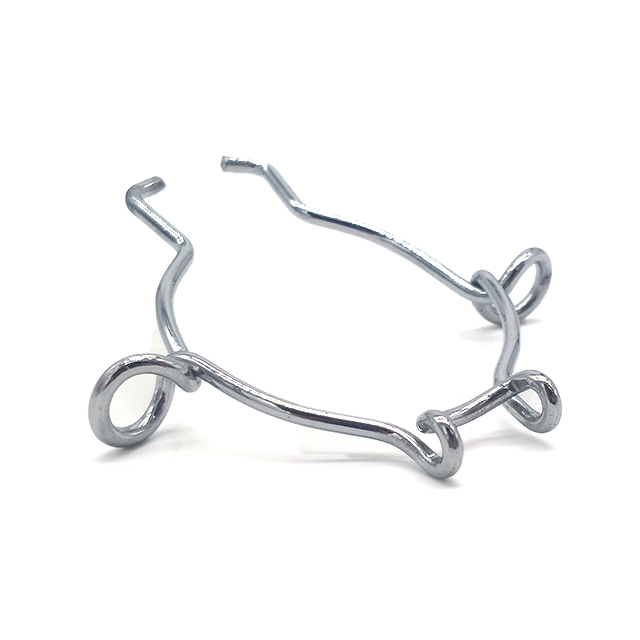Wire Forming Inspection Plays A Crucial Role In Ensuring The Quality And Compliance Of Wire Products. It Involves Various Techniques And Methods To Assess The Dimensional Accuracy, Surface Quality, And Overall Integrity Of Wire Forms. Here, I Will Describe Several Common Types Of Wire Forming Inspection Techniques.
Wire Forming Inspections Of Different Types
1. Visual Inspection: Visual Inspection Is The Most Basic And Widely Used Method For Wire Forming Inspection. It Involves Visually Examining The Wire Forms For Any Visible Defects, Such As Surface Imperfections, Cracks, Bends, Or Irregularities. Trained Inspectors Carefully Inspect The Wire Forms To Ensure They Meet The Required Standards And Specifications.
2. Dimensional Inspection: Dimensional Inspection Focuses On Verifying The Dimensional Accuracy And Consistency Of Wire Forms. This Can Be Done Using Various Tools Such As Calipers, Micrometers, Gauges, Or Coordinate Measuring Machines (Cmm).
Inspectors Measure Critical Dimensions, Such As Diameter, Length, Width, And Angles, To Ensure They Fall Within The Specified Tolerances.
3. Non-Destructive Testing (Ndt): Non-Destructive Testing Techniques Are Used To Inspect Wire Forms Without Causing Any Damage. These Methods Are Particularly Useful For Detecting Internal Defects Or Flaws That May Not Be Visible To The Naked Eye. Common Ndt Techniques Used In Wire Forming Inspection Include:
– Ultrasonic Testing: Ultrasonic Waves Are Used To Detect Internal Defects, Such As Cracks Or Voids, By Analyzing The Reflected Sound Waves.
– Eddy Current Testing: Eddy Currents Are Induced In The Wire Forms, And Changes In The Electrical Conductivity Or Magnetic Field Are Measured To Identify Surface Defects Or Variations In Material Properties.
– Magnetic Particle Inspection: Magnetic Particles Are Applied To The Wire Forms, And The Presence Of Magnetic Fields Helps Identify Surface Cracks Or Defects.
– X-Ray Or Radiographic Testing: X-Rays Or Gamma Rays Are Used To Inspect The Internal Structure Of Wire Forms, Revealing Any Hidden Defects Or Inconsistencies.
4. Surface Inspection: Surface Inspection Techniques Focus On Assessing The Quality And Integrity Of The Wire Form’S Surface. This Includes Detecting Surface Defects, Such As Scratches, Dents, Corrosion, Or Uneven Coatings. Common Surface Inspection Methods Include Visual Examination, Dye Penetrant Testing, And Optical Profilometry.
5. Mechanical Testing: Mechanical Testing Techniques Are Used To Evaluate The Mechanical Properties And Performance Of Wire Forms. This Includes Conducting Tests Such As Tensile Testing, Bend Testing, Compression Testing, Or Torsion Testing, As Described In The Previous Response. These Tests Help Ensure That The Wire Forms Meet The Required Strength, Flexibility, And Durability Standards.
6. Electrical Testing: For Wire Forms Used In Electrical Applications, Electrical Testing Is Essential. This Involves Measuring Electrical Properties Such As Resistance, Conductivity, Insulation Resistance, Or Dielectric Strength. Electrical Testing Ensures That The Wire Forms Meet The Required Electrical Performance Criteria.
7. Coating And Plating Inspection: Wire Forms Often Undergo Coating Or Plating Processes To Enhance Their Corrosion Resistance Or Improve Their Appearance. Coating And Plating Inspection Involves Assessing The Quality, Thickness, Adhesion, And Uniformity Of The Applied Coatings Or Platings.
Techniques Such As Visual Inspection, Thickness Measurement, Adhesion Testing, Or Salt Spray Testing Are Commonly Used.
8. Packaging And Labeling Inspection: In Addition To Inspecting The Wire Forms Themselves, It Is Important To Inspect The Packaging And Labeling To Ensure Proper Identification, Protection, And Compliance With Regulations.
This Includes Verifying The Accuracy Of Labels, Checking For Proper Packaging Materials, And Ensuring That The Wire Forms Are Adequately Protected During Transportation And Storage.
These Are Some Of The Common Types Of Wire Forming Inspection Techniques Used To Assess The Quality, Dimensional Accuracy, Surface Integrity, And Overall Compliance Of Wire Forms.
By Employing These Inspection Methods, Manufacturers Can Ensure That Their Wire Products Meet The Required Standards And Specifications, Providing Reliable And High-Quality Solutions To Various Industries.
I Wish Everyone Can Find Their Own Hardware Accessories, Xiamen Hongsheng Spring Welcome Your Choice!








